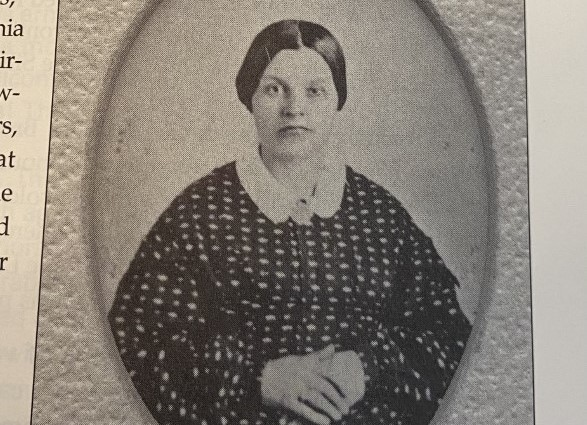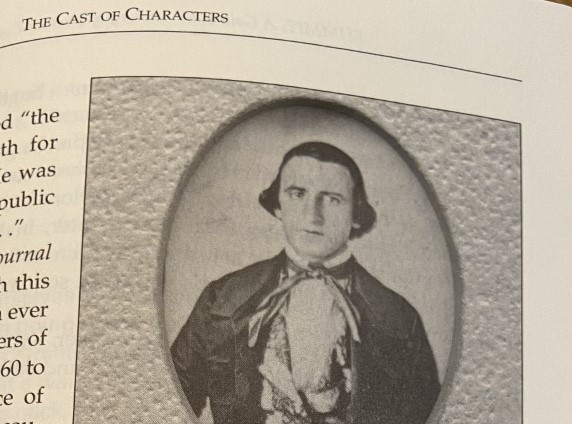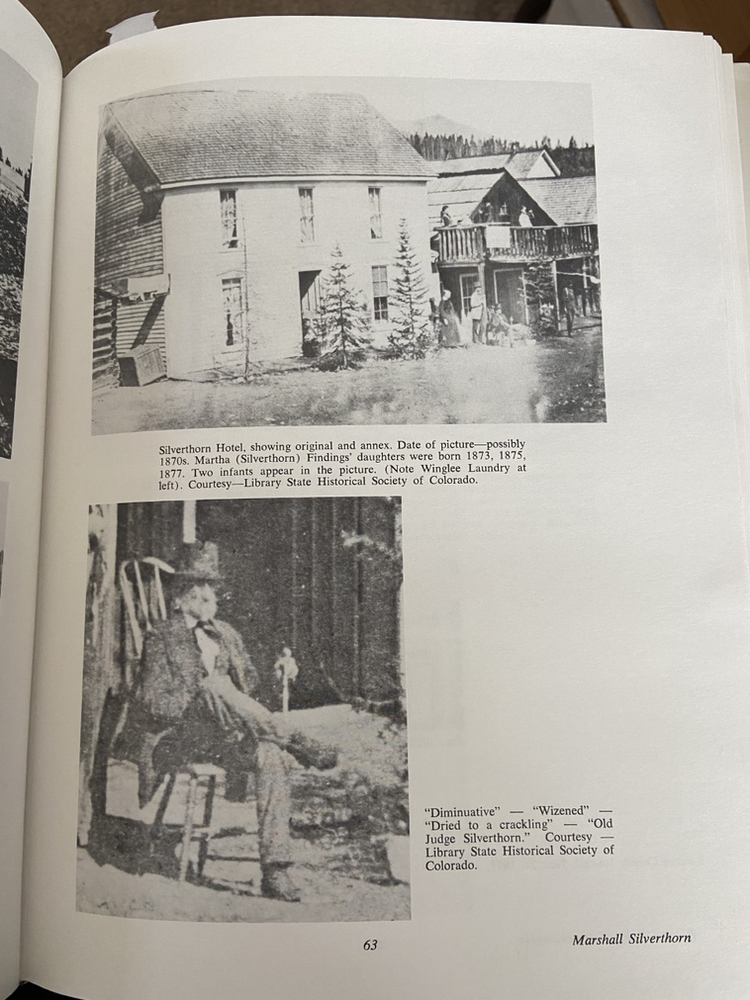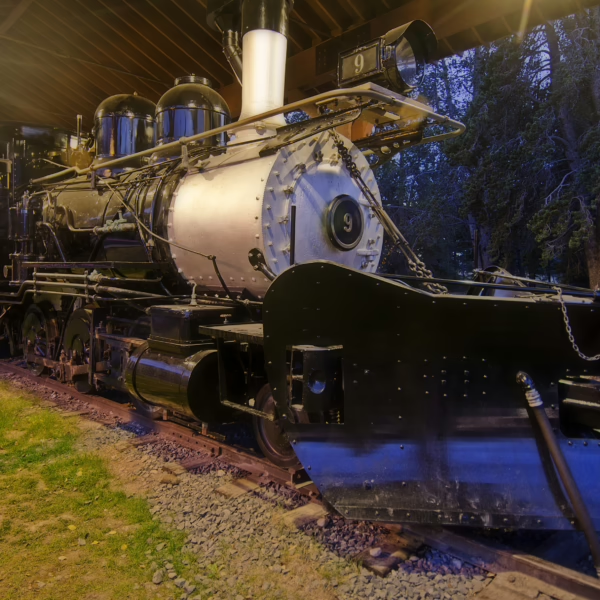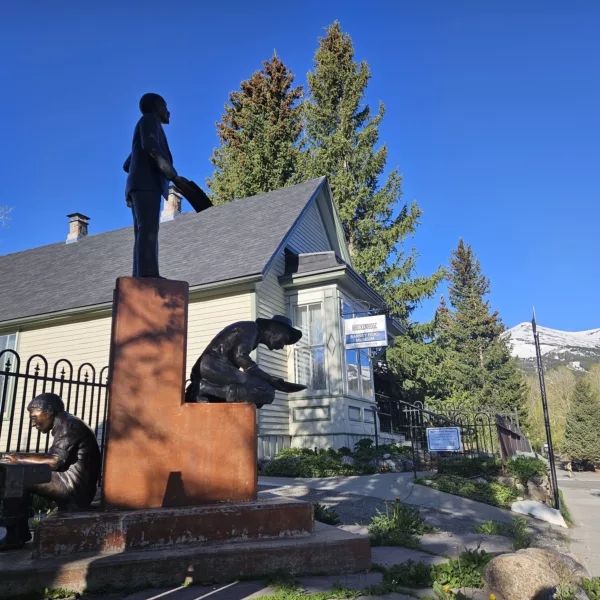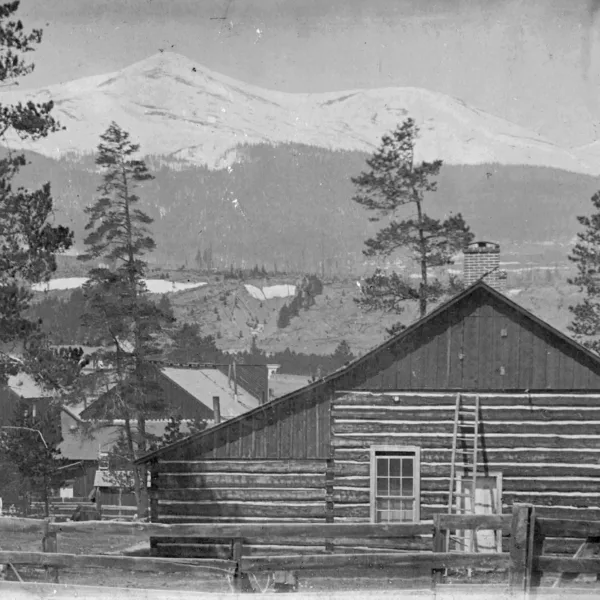Mujeres con fuerza de voluntad: Pioneras de Breckenridge
29 marzo 2022 | Category: Nuestra historia colectiva
Las mujeres pioneras de los primeros tiempos de Breckenridge, que sobrevivieron y prosperaron en el implacable entorno montañoso de las comunidades mineras de Colorado, dieron forma a la historia de Breckenridge. Aunque muchas mujeres fueron y vinieron de Breckenridge, pocas mostraron la fuerza de voluntad necesaria para mantener el rumbo y crear una comunidad a partir de la naturaleza. Y muchas mujeres aguantaron a duras penas en la dura ciudad minera. Conoce a tres mujeres con fuerza de voluntad y a una cuarta flor frágil, todas ellas ejemplos de las mujeres que hicieron Breckenridge.
Las valientes constructoras de comunidades Agnes Ralston Silverthorn, Catherine Sisler Nolan y Minnie Roby tenían al menos una cosa en común: la resiliencia. Su capacidad para adaptarse a circunstancias difíciles, improvisar soluciones y superar su condición de mujeres victorianas las diferenciaba de sus homólogas orientales. La sociedad occidental concedió a las mujeres más oportunidades de las que se les ofrecían "en Oriente", y ellas las aprovecharon.
Por el contrario, Anna Sadler Hamilton pasó sus años en Breckenridge preocupada por su familia, lamentándose por las duras condiciones y distanciándose de las demás mujeres del pueblo. Los diarios de su estancia en Breckenridge describen una vida de infelicidad.
Las mujeres de la época victoriana rara vez son identificadas por su propio nombre. Una vez casadas, los periódicos se referían a ellas por el nombre de su marido, como en Mrs. Marshall Silverthorn. Como las mujeres estaban inextricablemente unidas a sus hombres, nuestras historias de estas mujeres incondicionales comienzan con sus maridos.
La primera familia de Breckenridge, los Silverthorn, vivió en la ciudad en una época anterior a los periódicos, pero sus vidas fueron bien relatadas por los muchos escritores viajeros que pasaron por allí en las décadas de 1860 y 1870. Además de esos relatos, la nieta Agnes Finding Miner plasmó gran parte de la historia de la familia en dos manuscritos disponibles en los archivos de breckhistory.
Marshall Silverthorn llegó a la ciudad de Denver en 1859 con la primera oleada de buscadores de oro para recuperar la salud. Encantado con el clima y las oportunidades de la región aurífera de Pikes Peak, regresó a Pensilvania al año siguiente para reunir a su mujer y su familia y trasladarse definitivamente.
La familia Silverthorn se trasladó a Breckenridge en la primavera de 1861 y estableció un hotel. Como una mamá osa, la Sra. Silverthorn amaba y protegía ferozmente a su familia, tanto inmediata como extensa.
Era tan querida por los mineros de Breckenridge que cada primavera la bajaban en trineo desde el paso de Boreas a su regreso al pueblo (después de retirarse a cotas más bajas en primavera), gritando "hurra" por el camino. Descrita como una "amplia y pechugona matrona", desempeñaba el papel de madre de la comunidad, atendiendo a los enfermos, alimentando a los mineros y cuidando de sus invitados. Los sábados se dedicaba a hornear, utilizando la totalidad de un saco de harina de 45 kilos para hacer tartas, pan y pasteles para los mineros. El sábado era el día del correo y los hombres acudían en masa desde sus trabajos al hotel de Silverthorn para saborear el sabor de casa.
La Sra. Silverthorn se aseguró de que la civilización estuviera presente en los primeros tiempos de Breckenridge. Los domingos, el hotel se convertía en un lugar de culto, donde se leían sermones y se cantaban himnos. Cada invierno regresaba a Denver para que sus hijas pudieran ir a la escuela (su hijo se ahogó en el río Blue en 1863).
Cuando el secretario del condado intentó trasladar los registros del condado a la ciudad rival Parkville, la Sra. Silverthorn escondió el saco de arpillera y "salvó la sede del condado para Breckenridge".
Durante veinte años, la familia Silverthorn mantuvo unida a la comunidad, ejerciendo de buenos samaritanos y ofreciendo caridad para la tosca ciudad del oro construida sobre la codicia. Cuando la Sra. Silverthorn murió en 1883, también lo hizo el negocio familiar. Para entonces, sus hijas, "bellezas de ojos negros", ya estaban casadas y vivían solas. Marshall Silverthorn falleció cuatro años después.
El éxito de Agnes Ralston Silverthorn en Breckenridge se debió a su carácter maternal, justo el tipo de crianza que la primera Breckenridge necesitaba para madurar y convertirse en una comunidad.
Para más información sobre Agnes Silverthorn y la familia, véase el libro de Mary Ellen Gilliland Summit: A Gold Rush History y Blasted, Beloved, Breckenridge, de Mark Fiester.
El marido de Catherine Rhodes Sisler Nolan, veinticuatro años mayor que ella, llegó por primera vez a Breckenridge en 1859 y reclamó uno de los yacimientos de oro aluvial más ricos de la zona: el extremo oeste de French Gulch, donde los antiguos glaciares depositaron en su morrena oro libre por valor de una montaña.
De regreso a Pensilvania, convertido en un hombre rico, se casó con Catherine Rhodes en 1865 e inmediatamente partió de nuevo hacia Breckenridge. Ella crió a sus hijos mientras él explotaba las minas, hasta su muerte en 1883. Como propietaria de las empresas, Catherine Sisler se hizo cargo de la gestión de las minas, asociándose con John Nolan, un empleado del Sr. Sisler.
Más cercanos en edad y con la minería en común, la pareja se casó en 1885. Sin embargo, John Nolan no duró mucho. En su lecho de muerte, sólo tres años más tarde, Catherine Nolan se aseguró de que le cediera sus propiedades. A partir de entonces, ella se hizo cargo. Criada en el trabajo duro y la comprensión del valor de un dólar, la Sra. Nolan fue elogiada en el periódico local: "gracias a sus buenos métodos empresariales, ninguna mina de placer del campo está tan admirablemente gestionada".
Catherine Nolan amasó una gran fortuna, desde intereses mineros hasta el comercio minorista, la ganadería y la propiedad de tierras en los condados de Summit y El Paso. Según su necrológica, "conocerla era respetarla". Catherine está enterrada en el cementerio Valley Brook de Breckenridge.
La historia de Catherine Sisler Nolan ilustra un tema común en Occidente: las mujeres que tuvieron la posibilidad de triunfar por sí mismas tuvieron la oportunidad de hacerlo muy bien, y marcaron el camino a las futuras empresarias.
Para saber más sobre Catherine Sisler Nolan, consulte el libro de Bill Fountain Persiguiendo el sueño: The Search for Gold in French Gulch.
John D. Roby llegó a Colorado en los primeros días de la fiebre del oro, estableciéndose en Breckenridge conduciendo equipos de mulas en 1864. En 1866, abrió su primera tienda y comenzó su ascenso en las filas de la comunidad, sirviendo más tarde como administrador de correos, tesorero del condado, miembro de la junta de la compañía de telégrafos, y masón libre, además de vender su mercancía y la minería. Cuando Minnie llegó a la ciudad en 1875, ya era un hombre de negocios de éxito.
Minnie Remine procedía de una familia de mujeres resistentes. Criada en la comunidad minera de Central City, su padre murió cuando ella era joven y su madre tuvo que criar sola a tres hijas. En busca de mayores oportunidades, la Sra. Remine se trasladó a Breckenridge en 1875 para abrir una pensión, que tuvo un gran éxito. La hospitalidad era cosa de familia. Minnie sería conocida por sus numerosas fiestas.
Una vez convertida en la Sra. de John D. Roby, Minnie prosperó en su papel de madre y ama de casa, disfrutando de un estilo de vida de riqueza y privilegio en la floreciente Breckenridge. El juego de cartas era su pasión e inició el Club de Cartas de Señoras, destacando en whist, euchre y high-five. Los ganadores de los juegos competitivos recibían lujosos regalos. Los premios entregados parecen el rescate de una reina: cucharas de plata de ley, frutero lacado, palos de velas, un palillero de plata, jardineras y una cuchara de crema forrada de plata y oro.
Además de las fiestas de cartas, la Sra. Roby organizaba elegantes bailes y fiestas de cumpleaños, bodas y graduaciones, en las que brillaban sus dotes de "artista culinaria".
La Sra. Roby encontró tiempo para servir como juez electoral, miembro del consejo escolar y bibliotecaria, vendió bonos de guerra y recaudó dinero para la Cruz Roja, fomentó la caridad como miembro de las Hermanas Semillas de Mostaza, apoyó a su iglesia y fue activa tanto en las Mujeres de Woodcraft como en Eastern Star. Sus historias publicadas de Breckenridge proporcionan una información considerable para los historiadores. También tuvo diez hijos, seis de los cuales sobrevivieron.
Breckenridge era un lugar animado y divertido gracias a la generosidad y hospitalidad de mujeres como Minnie Remine Roby.
Por el contrario, la triste Anna Sadler Hamilton sufrió casi cada minuto de su estancia en Breckenridge. Llegada en 1885 como la joven novia de Robert Hamilton, un popular y alegre propietario de un mercado de carne, el diario de Anna está lleno de lamentos. Tal vez los polos opuestos se atraen, ya que Anna no era ni popular ni alegre. Los relatos periodísticos de las relaciones domésticas de Robert omiten toda mención a Anna. Aunque intentaba hacer amigos, confió a su diario que una mujer del pueblo la ponía "enferma", otra tenía "una lengua que corre como un aserradero" y su hija era "tonta e insípida", y otra mujer era "horrible". Los hombres no eran mejores. A un grupo que holgazaneaba en una esquina, quiso "ponerles mala cara".
Aislada en su petulancia, Anna Hamilton pasaba el tiempo preocupada por su familia en casa, preguntándose por qué no escribían. Odiaba las tareas domésticas, coser y cocinar, tareas que se esperaban de ella en su papel de esposa. Detestaba la nieve y el viento. En 1887, se armó de valor y le dijo a Rob que no quería seguir viviendo en Breckenridge. Alejando aún más a su marido, se entregó a la bebida. Anna se sentía abandonada y así era. Sus cumpleaños no se celebraban y Rob no le hizo regalos de Navidad en 1887.
En otoño de 1887, Rob vendió la carnicería y se dedicó al negocio de los aserraderos. No mucho después, Anna se salió con la suya. La familia se trasladó a Nebraska, donde Rob encontró por fin un importante éxito económico como ganadero.
Sin embargo, Rob Hamilton no había terminado con Breckenridge. Regresó en 1909 de visita, llevando consigo a Anna y a los niños. En 1911, la familia estaba de vuelta en Denver y Rob invirtió en un rancho de 700 acres en el río Lower Blue, al norte de Breckenridge. Siguió teniendo intereses mineros en la zona.
Se desconoce el final de la vida de Anna Hamilton. Jen Baldwin, genealogista e historiadora familiar de Colorado, intentó investigar la vida de Anna y no consiguió nada. Todo lo que tenemos de su triste vida está registrado en su diario. Baldwin cree que Anna murió alrededor de 1914.
No todas las mujeres que llegaron a Breckenridge contribuyeron a la comunidad de forma duradera. Muchas mujeres fueron como Anna Sadler Hamilton, desubicadas y desdichadas en el campamento minero de alta montaña. Si no fuera por su diario, habría desaparecido por completo de la historia de Breckenridge.
Para saber más sobre Anna Sadler Hamilton y las mujeres de la frontera, consulte el libro de Sandra Mather: No todas eran prostitutas y jugadoras.
La historia reconoce a las personas influyentes, las personas que hicieron la comunidad y dieron de sus talentos únicos para crear un Breckenridge duradero. Al celebrar el Mes de la Historia de la Mujer, tratamos de recordar a las personas influyentes, captar diversas voces femeninas y compartir las historias de las incondicionales, las Agnes Silverthorns, Minnie Robys y Catherine Sislers, mujeres tan altas como nuestras montañas. Para saber más sobre la historia de Breckenridge, visite un museo, haga una excursión o lea los artículos de nuestro blog.
Escrito por Leigh Girvin

